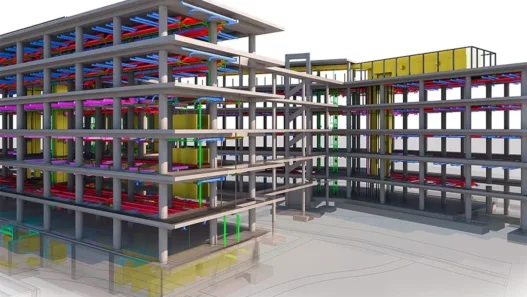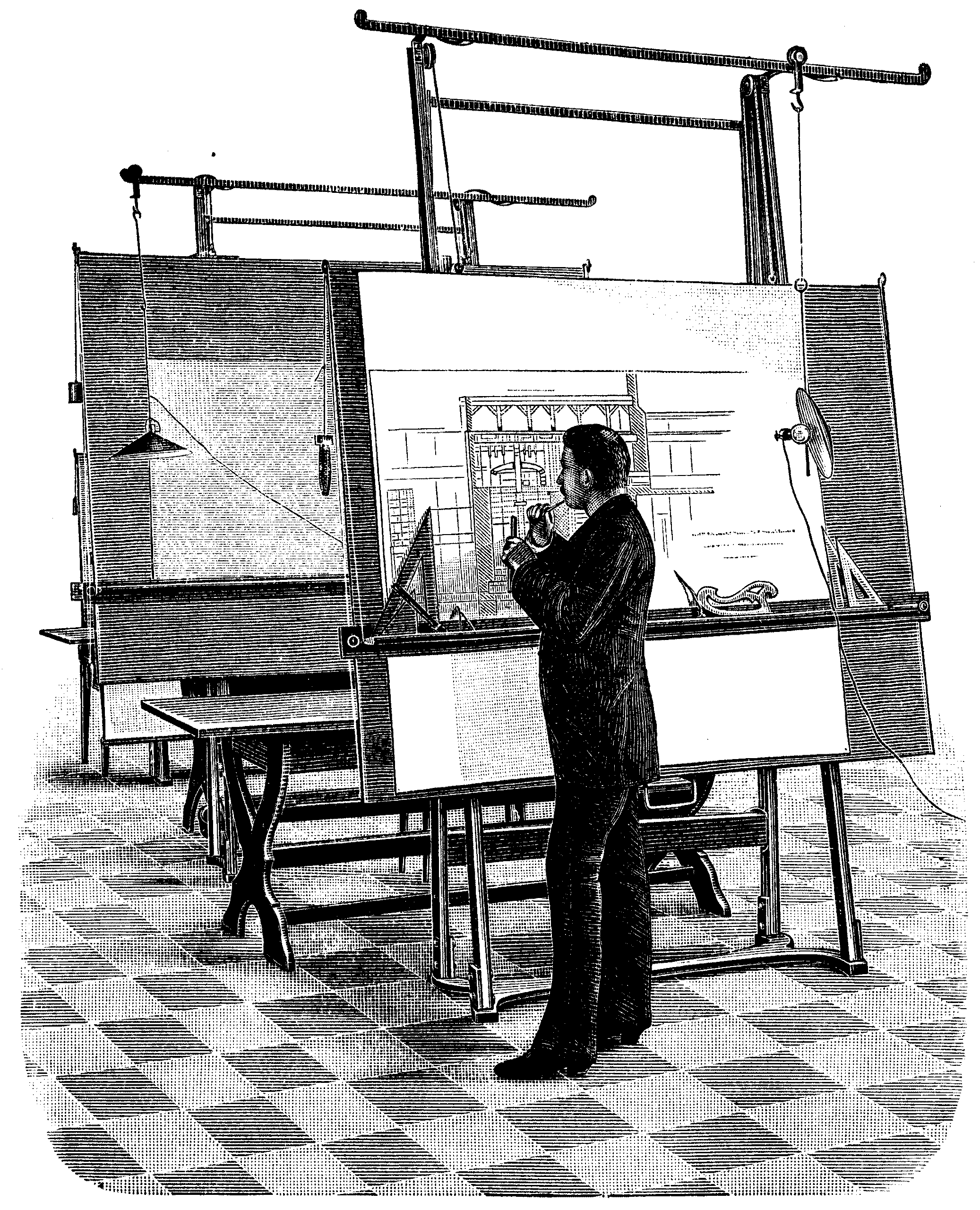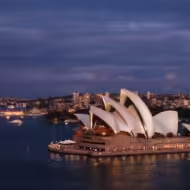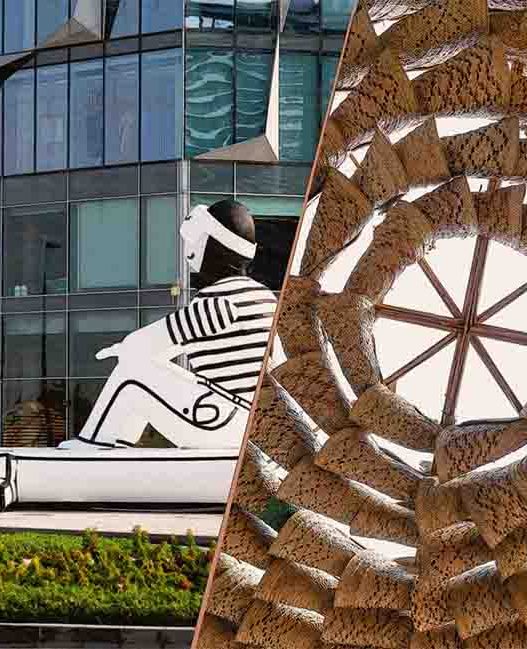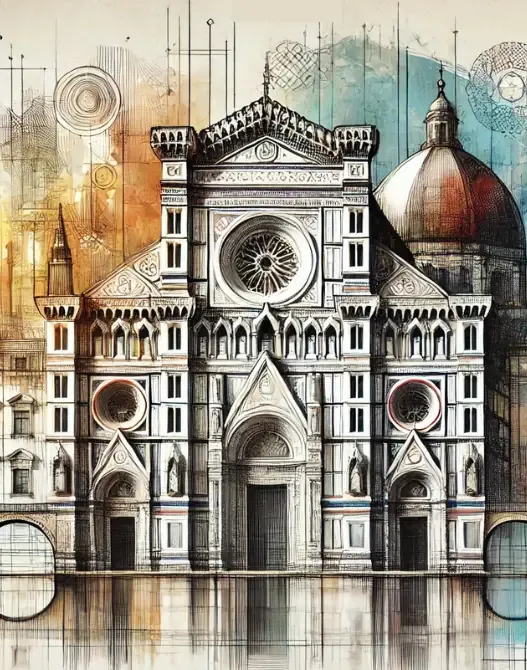Stockholm, the capital of Sweden, is a city where history and modernity are beautifully intertwined. Its architectural landscape is a vibrant tapestry that reflects not only the city’s rich past, but also its forward-thinking approach to sustainability and design. From the charming cobblestone streets of Gamla Stan to the sleek lines of contemporary buildings, Stockholm showcases a unique blend of Scandinavian minimalism and innovative urban planning.

Historical Context
To understand Stockholm’s architectural landscape, it is necessary to take a journey through the city’s history. Founded in the 13th century, the city has evolved significantly over the centuries. Medieval roots are still evident in Gamla Stan’s narrow streets and historic buildings, providing a backdrop to the city’s modern development. The 18th and 19th centuries saw the rise of neoclassical architecture influenced by European styles, while the industrial era brought functional buildings to cater to the growing population. This rich historical context provides a foundation for Stockholm’s contemporary architectural identity, which seamlessly integrates its past and present.
Influence of Scandinavian Design Principles
Scandinavian design is renowned for its simplicity, functionality and emphasis on natural materials. In Stockholm, these principles are manifested in a variety of architectural styles characterized by clean lines, open spaces and a harmonious relationship with nature. The use of light-colored wood, glass and stone creates a sense of warmth and accessibility. Furthermore, the design prioritizes the user experience, ensuring that buildings not only fulfill their function but also enhance the quality of life of their occupants. This philosophy is manifested in the design of public spaces, residential areas and commercial buildings, all of which promote community interaction and well-being.
Overview of Sustainable Practices
Sustainability is a cornerstone of Stockholm’s architectural approach. The city has set ambitious targets to become fossil fuel free by 2040, which encourages innovative approaches to design and construction. Architects and planners are increasingly incorporating green roofs, energy-efficient systems and renewable materials into their projects. For example, the eco-friendly Hammarby Sjöstad district exemplifies how sustainable urban planning can create vibrant communities. Here, waterways are integrated into the design, encouraging biodiversity and serving as natural cooling systems. Such practices not only reduce the ecological footprint, but also inspire residents to engage with their environment.
The Importance of Urban Planning
Effective urban planning is crucial to Stockholm’s architectural success. The city’s layout promotes accessibility and connectivity by ensuring that different neighborhoods are well served by public transport and pedestrian routes. This careful planning encourages residents to adopt a sustainable lifestyle, reducing reliance on cars and promoting a vibrant public life. The emphasis on mixed-use developments blurs the lines between residential, commercial and recreational spaces, creating a dynamic urban environment where people can live, work and play. Prioritizing public spaces and social interaction, Stockholm’s urban planning reflects a commitment to improving the quality of life for all its residents.
Important Architectural Trends in Stockholm
Throughout its history, Stockholm has been shaped by several important architectural movements that have left a lasting impact on its skyline. The National Romantic movement, prevalent in the early twentieth century, emphasized local materials and traditional forms, resulting in iconic buildings such as Stockholm City Hall. The Functionalist movement, which emerged in the 1930s, prioritized practicality and simplicity by adopting modern materials and techniques. In recent years, contemporary architecture has come to the fore with innovative designs such as the Kista Science Tower and the new Waterfront Convention Center. Each of these movements contributes to the rich narrative of Stockholm’s architecture, demonstrating how the city is constantly adapting and evolving while honoring its heritage.
Ultimately, Stockholm’s architectural landscape is a testament to its historical depth, commitment to sustainability and adherence to Scandinavian design principles. As the city continues to grow and change, it remains at the forefront of innovative urban design, balancing the need for modernity with respect for its past.
Stockholm, the capital of Sweden, is renowned for its striking blend of natural beauty and innovative architecture. Situated on islands connected by bridges, the city embodies the principles of Scandinavian minimalism, emphasizing simplicity, functionality and a deep respect for the environment. Stockholm has not only embraced its rich history, but has also become a global leader in sustainable urban design, setting an inspiring model for cities around the world.
Notable Architectural Masterpieces in Stockholm
Stockholm’s architectural landscape is a tapestry woven from history, culture and modernity. Each building tells a story that reflects the city’s evolution over time and its commitment to sustainability and design excellence.
Stockholm City Hall
One of Sweden’s most iconic buildings, Stockholm City Hall, or Stadshuset, stands proudly on the shores of Lake Mälaren. Completed in 1923, this masterpiece was designed by architect Ragnar Östberg. Its striking tower, adorned with a golden spire featuring the Three Crowns, symbolizes Sweden’s sovereignty.
Inside, the Blue Hall hosts the annual Nobel Prize banquet, while the Gold Hall dazzles with its mosaic-covered walls displaying more than one million pieces of gold leaf. The Town Hall is not just a seat of government; it embodies Sweden’s democratic spirit, emphasizing openness and transparency. Visitors can explore its majestic architecture and enjoy panoramic views from the tower, gaining a deeper appreciation of both the city and its history.
Royal Swedish Opera
Located in the heart of Stockholm, the Royal Swedish Opera (Kungliga Operan) is a striking example of neoclassical architecture. Opened in 1898, this opera house is both a cultural institution and a visual delight. The exterior, with its majestic columns and intricate sculptures, invites visitors into a world of artistic expression.
Inside, the richness of the auditorium, with its plush red seats and gold accents, enriches the live performance experience. The Royal Swedish Opera not only showcases the best of Swedish and international talent, but also hosts various outreach programs that make opera accessible to a wider audience. This commitment to cultural participation underlines the importance of the arts in city life and reflects Stockholm’s commitment to fostering creativity.
Vasa Museum
A unique jewel in Stockholm’s architectural crown, the Vasa Museum is dedicated to the 17th-century warship Vasa, which sank on its maiden voyage in 1628. Designed by Swedish architect Göran Holmström, the museum harmoniously combines functionality with an engaging visitor experience. The museum’s dramatic architecture complements the ship on full display, allowing visitors to appreciate the scale and craftsmanship of this historic vessel.
The Vasa Museum not only preserves an important piece of maritime history, but also serves as a testament to Stockholm’s ability to blend education and tourism. With exhibitions that explore the ship’s cultural and historical context, the museum has become one of Sweden’s most popular attractions, captivating millions of visitors each year.
Modern Developments: Docks
Stockholm’s waterfront is a showcase of modern urban design that emphasizes the integration of nature and urban life. Recent developments have transformed once industrial areas into vibrant neighborhoods that prioritize sustainability and community. Parks, cafes and recreational areas along the waterfront invite locals and tourists alike to enjoy the natural beauty of the city.
Architectural innovations in this area reflect a commitment to eco-friendly design, with buildings featuring green roofs, energy-efficient materials and smart technology. This evolution not only enhances the aesthetic appeal of the coast, but also promotes a sustainable lifestyle by showing how modern architecture can harmoniously coexist with the environment.
Rotating Body
Although not located directly in Stockholm, the Turning Torso in Malmö is an important architectural landmark that reflects broader trends in Scandinavian design. Designed by renowned architect Santiago Calatrava, this twisting skyscraper stands as a testament to innovative engineering and aesthetic beauty. Soaring meters high, Turning Torso is Sweden’s tallest building and showcases a unique design inspired by the human form.
Its spiral shape and glass facade create a dynamic visual effect that changes with the light throughout the day. The building’s commitment to sustainability, including energy-efficient systems and materials, is in line with the architectural ethos of the region. A symbol of modernity and ambition, Turning Torso inspires architects and urban planners by embodying the forward-thinking spirit of Scandinavian design.
—
As you explore these architectural masterpieces, it becomes clear that Stockholm is more than just a beautiful city; it is a living example of how thoughtful design can enhance urban life while respecting cultural heritage and environmental sustainability. From historic to modern, each building contributes to a narrative that celebrates innovation, community and the harmonious union of nature and architecture.
Scandinavian design, particularly evident in Stockholm, is renowned for its minimalist aesthetic and deep-rooted commitment to sustainability. This design philosophy is not just about creating beautiful spaces; it reflects a way of life that values simplicity, functionality and harmony with nature. In this research, we will examine the key features of Scandinavian minimalism that define Stockholm’s architectural landscape and show how these elements contribute to the city’s unique character and environmental awareness.
Key Features of Scandinavian Minimalism
Clean Lines and Simple Forms
Scandinavian minimalism is based on the principle of clean lines and simple forms. This design approach takes a minimalist approach where less is more. Buildings in Stockholm often have geometric shapes and uncluttered facades that exude elegance without unnecessary ornamentation. Simplicity in design allows for a seamless flow between spaces, making interiors feel open and inviting.
For example, the iconic Stockholm Public Library exemplifies this principle with its cylindrical shape and simple design. The focus on clarity and functionality not only enhances visual appeal, but also promotes a sense of calm and order that reflects the Scandinavian lifestyle.
Natural Materials and Color Palettes
Another hallmark of Scandinavian minimalism is the use of natural materials and subtle color palettes. In Stockholm, architects often opt for wood, stone and glass, which not only add warmth and texture to spaces, but also harmonize with the region’s natural surroundings. The choice of materials is deeply linked to sustainability, as these elements are often locally sourced and environmentally friendly.
The color palettes are generally muted to include whites, grays and earth tones that create a calm atmosphere. This approach not only enhances the beauty of the architecture, but also promotes a sense of tranquility, creating a connection between the inhabitants and their surroundings. The use of natural materials and colors reflects the Scandinavians’ respect for nature and their desire to harmoniously integrate the built environment with the landscape.
Functional and Efficient Spaces
Functionality is paramount in Scandinavian design, which prioritizes practicality without sacrificing aesthetic appeal. In Stockholm, this philosophy is reflected in the intelligent use of space in urban apartments and public buildings. Designs often incorporate multifunctional furniture and open layouts that maximize usability while minimizing clutter.
An example of this can be found in the design of many residential buildings, where compact living solutions are paired with common areas that encourage social interaction. This focus on efficiency not only makes living spaces more enjoyable, but also addresses the challenges of urbanization by promoting a more sustainable lifestyle.
Integration with Nature
In Stockholm, the integration of architecture with nature is a fundamental aspect of design. Many buildings are strategically placed to take advantage of the surrounding landscape, emphasizing views of parks, waterways and green spaces. This connection to nature is not only aesthetic; it also enhances residents’ well-being by providing easy access to outdoor environments for relaxation and recreation.
The design of Kista Science City, for example, emphasizes this integration by incorporating green roofs and vertical gardens that blend in with the natural environment. This approach not only beautifies the urban environment, but also contributes to biodiversity and improves air quality, demonstrating how architecture can coexist harmoniously with nature.
The Role of Light in Design
Light plays a crucial role in Scandinavian minimalism, influencing both the aesthetic and functional aspects of design. In Stockholm, architects prioritize natural light, using large windows and open spaces to invite sunlight indoors, creating bright and airy environments. This emphasis on light reflects the long, dark winters typical of the region, where maximizing daylight is essential to enhance mood and comfort.
Villa Mairea, designed by Alvar Aalto, is a prime example of how light shapes the architectural experience. The strategic placement of windows not only frames picturesque views, but also creates a deep connection between indoor and outdoor spaces. This thoughtful approach to light design emphasizes the importance of creating environments that promote health and well-being, one of the core principles of Scandinavian living.
As a result, the key features of Scandinavian minimalism in Stockholm – clean lines, natural materials, functional spaces, integration with nature and strategic use of light – combine to create a city that is both beautiful and sustainable. These principles not only define the architectural landscape, but also reflect a lifestyle that values simplicity, efficiency and a deep respect for the natural world. As Stockholm continues to grow, these elements will undoubtedly play an important role in shaping the city’s future and ensure that the city remains at the forefront of innovative, sustainable design.
Sustainable City Design in Stockholm
Stockholm, the capital of Sweden, is a pioneer of sustainable urban design, embodying the principles of Scandinavian minimalism. This approach emphasizes simplicity, functionality and harmony with nature. As urban areas around the world grapple with issues such as pollution, traffic congestion and climate change, Stockholm offers an intriguing model of how to create a city that prioritizes both the environment and the well-being of its residents.
Urban Green Spaces
One of the defining features of Stockholm’s sustainable design is its commitment to urban green spaces. The city is known for its parks, gardens and waterfronts that seamlessly integrate into the urban environment. These green spaces offer residents an escape from the hustle and bustle of city life, promoting mental well-being and physical health. Areas such as Djurgården, an island park filled with walking paths, museums and lush vegetation, exemplify this philosophy.
The presence of these green spaces is not just aesthetic; they play a critical role in biodiversity and climate resilience. They help reduce the urban heat island effect, improve air quality and provide habitats for a variety of species. Furthermore, Stockholm’s strategic planning ensures that these areas are accessible to all, encouraging social interaction and improving the quality of life of citizens.
Sustainable Transportation Solutions
Transportation in Stockholm reflects the city’s commitment to sustainability. The extensive public transportation system, including buses, subways and ferries, is designed to reduce reliance on cars and thus reduce greenhouse gas emissions. The city encourages cycling through dedicated bike lanes and bike-sharing programs, making it easy and safe for residents to choose this environmentally friendly mode of transportation.
Stockholm has also adopted innovative solutions such as a congestion tax that discourages unnecessary driving in the city center. This initiative not only reduces congestion, but also raises funds for public transport improvements. The result is a clean and efficient transport network that emphasizes accessibility and environmental responsibility, setting an example for city centers around the world.
Energy Efficient Buildings
In the field of architecture, Stockholm demonstrates its commitment to energy-efficient buildings that blend aesthetics with functionality. Combining sustainable materials and innovative design, many buildings meet strict energy standards. For example, the Hammarby Sjöstad district is a prime example of a sustainable neighborhood that integrates energy-saving technologies such as solar panels and green roofs.
These buildings are designed not only to minimize energy consumption, but also to create a comfortable living environment. Large windows maximize natural light, reducing the need for artificial lighting, while careful insulation minimizes energy loss. Stockholm’s focus on sustainability in architecture demonstrates how urban design can contribute to a healthier planet and at the same time improve the quality of life of its residents.
Waste Management and Recycling Initiatives
Stockholm has implemented extensive waste management and recycling initiatives that exemplify its commitment to sustainability. The city aims to be fossil fuel-free by 2040 and effective waste management is an important element of this goal. Residents are encouraged to participate in waste sorting through a well-organized recycling system that separates organics, plastics and metals.
Innovative waste-to-energy plants convert non-recyclable waste into energy, reducing landfill use and providing renewable energy for the city. This approach not only addresses waste disposal, but also contributes to the city’s energy needs. By involving the community in these initiatives, Stockholm fosters a culture of sustainability and encourages its residents to take an active role in protecting their environment.
Community Engagement and Social Sustainability
The success of Stockholm’s sustainable urban design is based on community participation. By actively involving residents in planning processes, the city ensures that urban development reflects the needs and aspirations of the population. Public forums, workshops and surveys allow citizens to voice their opinions and contribute to decision-making.
This emphasis on social sustainability goes beyond mere participation. Stockholm prioritizes inclusive design, ensuring that all community members, regardless of age or ability, have access to public spaces and services. The city’s commitment to social equity fosters a sense of belonging and social cohesion, key components of a thriving urban environment.
Stockholm is a testament to what can be achieved when sustainability and urban design intersect. Its innovative approaches to green spaces, transportation, energy efficiency, waste management and community engagement provide a model for other cities to emulate. As urbanization continues to increase globally, the example of Stockholm offers valuable lessons on building a sustainable future for all.
Challenges and Innovations in Stockholm Architecture
Known for its stunning archipelago and rich history, Stockholm is a shining example of how modern architecture can harmonize with nature and culture. As the city evolves, it faces a unique set of challenges while pioneering innovative solutions. This complex dance between preserving the past and embracing the future defines Stockholm’s architectural landscape.
Balancing Historic Preservation and Modern Needs
Stockholm’s architectural identity is deeply rooted in history, with well-preserved buildings dating back centuries. The challenge lies in integrating modern buildings without overshadowing the city’s historic character. This balance is crucial as the city’s charm attracts both tourists and residents.
Innovative architects in Stockholm have taken a sensitive approach to design, ensuring that new developments enrich rather than detract from the historic fabric. For example, the addition of contemporary glass and steel structures often complement traditional styles, creating a dialog between old and new. A notable example is the Royal Swedish Opera, which has undergone renovations that respect its historical context while offering modern amenities.
Climate Resilience Strategies
As climate change accelerates, cities around the world must adapt, and Stockholm is no exception. The city has invested in several climate resilience strategies to address rising sea levels and extreme weather events. One key initiative is the development of green infrastructure, including parks and green roofs that absorb rainwater and reduce urban heat.
Stockholm’s coastal areas are also being redesigned to withstand flooding by implementing barriers and natural buffers. The city is a pioneer in using smart technology to monitor environmental changes, ensuring that urban planning is proactive rather than reactive. These strategies not only protect the city but also enhance its beauty and show how innovation can coexist with sustainability.
Addressing the Housing Shortage
Like many urban centers, Stockholm faces an urgent housing shortage exacerbated by a growing population. The challenge is not only to build more houses, but also to create affordable and sustainable living spaces. The city has embraced innovative housing solutions such as modular construction and co-housing initiatives that encourage community living while reducing costs.
One inspiring project is Hammarby Sjöstad, a former industrial area that has been transformed into a vibrant residential community. This development prioritizes sustainability with energy-efficient buildings and an emphasis on public transportation. By redesigning urban spaces, Stockholm is setting a precedent for other cities facing similar challenges.
Technological Advances in Building Design
Stockholm’s architectural scene is at the forefront of technological developments that are redefining the way buildings are designed and constructed. The integration of digital tools such as Building Information Modeling (BIM) allows architects to create more efficient and sustainable designs. This technology streamlines the construction process, reducing waste and increasing energy efficiency.
Furthermore, innovative materials such as cross-laminated timber are gaining popularity and offer a sustainable alternative to traditional concrete and steel. These materials not only reduce the carbon footprint of buildings, but also contribute to a warmer, more inviting aesthetic. As Stockholm embraces these developments, it demonstrates the potential of technology to foster architectural creativity while prioritizing environmental responsibility.
Public Participation in Urban Development
In Stockholm, public participation plays a crucial role in urban development. The city’s planning processes actively involve residents, ensuring that their voices are heard. This collaborative approach fosters a sense of community ownership and pride in local developments.
Engaging the public through workshops and consultations allows for diverse perspectives, leading to more inclusive and effective urban planning. Projects such as the Slussen redevelopment exemplify this participatory model, where community feedback influences design decisions. By prioritizing citizen engagement, Stockholm is not only strengthening its urban fabric, but also developing a vibrant civic culture.
Ultimately, Stockholm’s architectural journey is a testament to the city’s commitment to balancing history with modernity, sustainability and community engagement. Overcoming challenges and embracing innovation, Stockholm stands as a beacon for cities worldwide, showing that thoughtful design can create a harmonious and resilient urban environment.
Conclusion: The Future of Architecture in Stockholm
When looking towards the horizon of architectural evolution in Stockholm, it is crucial to recognize the city’s unique blend of respect for history and forward-thinking innovation. The future of architecture here is not just about buildings; it encompasses a broader vision of urban living that prioritizes sustainability, community and aesthetic simplicity.
Emerging Trends in Scandinavian Design
In recent years, Scandinavian design has evolved to take a more holistic approach to urban living. This shift is characterized by a mix of minimalism and functionalism and focuses on creating spaces that encourage community engagement while being environmentally sensitive. Architects are increasingly experimenting with biophilic design, which integrates natural elements into urban environments. This approach not only enhances the aesthetic appeal of buildings, but also improves the well-being of their inhabitants.
The rise of “green roofs” in Stockholm, for example, is testament to this trend, where rooftops are transformed into lush gardens that support biodiversity while also providing recreational spaces for building occupants. Similarly, the use of sustainable materials such as reclaimed wood and recycled metals is becoming increasingly common, pushing the boundaries of traditional Scandinavian architecture and ushering in an era of eco-friendly innovation.
The Role of Architecture in Shaping Urban Identity
Architecture plays an important role in defining the identity of cities and Stockholm is no exception. The city’s architectural landscape tells a story of resilience and adaptation, with a mix of historic structures and contemporary designs. Each building contributes to Stockholm’s overall narrative by reflecting its cultural heritage while embracing modernity.
Iconic structures such as the Stockholm Waterfront Convention Center demonstrate how architecture can serve as a symbol of progress and community. This venue not only hosts international conferences, but also stands as a beacon of sustainable design that integrates energy-efficient technologies and promotes public transportation access. As new developments emerge, they must be compatible with the city’s identity and provide a cohesive urban fabric that honors the past while looking to the future.
Lessons from Stockholm for Global Cities
Stockholm’s approach to urban planning offers valuable lessons for cities around the world grappling with the challenges of rapid urbanization and climate change. The city’s commitment to sustainability is evident in its ambitious goal to become fossil fuel-free by 2040. This vision is supported by comprehensive public transportation systems, extensive bicycle infrastructure and pedestrian-friendly urban design.
Cities like New York and Tokyo can take inspiration from Stockholm’s integration of green spaces into urban environments. The strategic placement of parks and waterfronts not only improves the quality of life for residents, but also reduces urban heat and promotes biodiversity. Implementing similar strategies can help other cities create more livable environments that prioritize well-being and ecological balance.
Continuing the Legacy of Sustainability
As Stockholm continues its journey towards sustainability, the architectural community is playing an important role in continuing this legacy. There is a growing emphasis on adaptive reuse of existing buildings, which reduces the need for new construction and minimizes waste. This practice honors the historical significance of buildings while giving them new life.
Moreover, the incorporation of smart technologies into building design is revolutionizing the way energy is consumed and managed. Innovations such as smart meters and energy-efficient appliances are becoming standard, allowing building occupants to effectively monitor and reduce their energy use. This mix of traditional values and modern technologies ensures that Stockholm is at the forefront of sustainable urban design.
Vision for Future Developments
Looking to the future, the vision for future developments in Stockholm is based on the principles of inclusiveness and innovation. As the city expands, it aims to create spaces that are not only functional but also foster a sense of belonging among residents. This means prioritizing affordable housing, mixed-use developments and community spaces that encourage interaction and collaboration.
Furthermore, the architectural landscape will likely continue to embrace advances in sustainable technologies and push the boundaries of what is possible. Concepts such as vertical gardens and zero-energy buildings may become commonplace, transforming the skyline into a living, breathing ecosystem. By continuing to champion these ideals, Stockholm sets a strong example for cities around the world, proving that a harmonious balance between human needs and environmental stewardship is not only achievable, but essential for the future.
Ultimately, Stockholm’s architectural journey is a testament to the potential for cities to evolve in a sustainable way while maintaining their unique identity. As we navigate the complexities of urban life, the lessons learned from this vibrant city will undoubtedly resonate far beyond its borders and inspire a worldwide movement towards more thoughtful, sustainable and inclusive urban environments.
Discover more from Dök Architecture
Subscribe to get the latest posts sent to your email.





